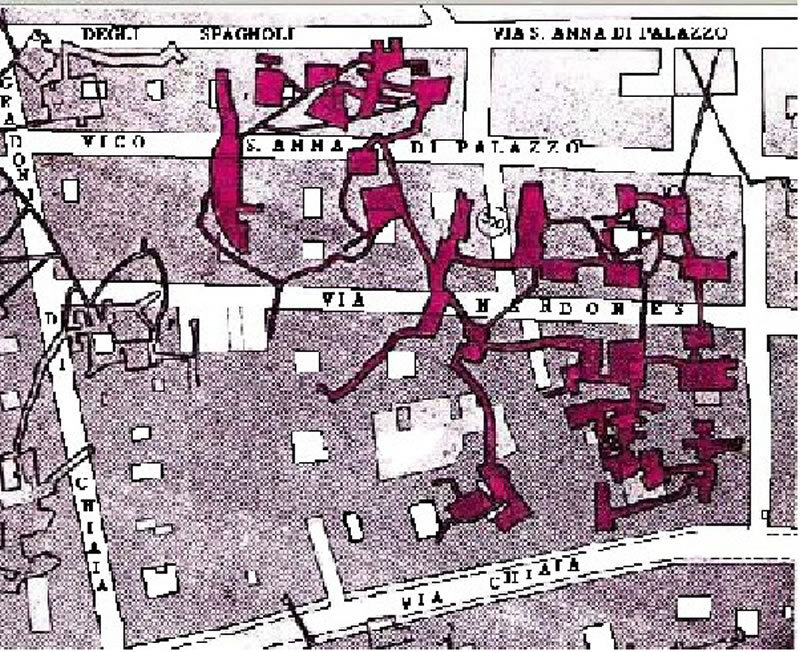Italy

Hydria Virtual Museum
الصلة بالموضوع
Although ancient Naples have always lacked a main water source within the city territory, its people ensured supplies through the aqueducts that included a few springs, wells and thousands of large cisterns of large size.
The durable and easily worked tuff or yellow tuff sandstone was ideal for digging deep aqueducts originating from springs in the outlying mountains down to the city centre. The Ancient Greeks probably first did this some 2,500 years ago, and over the centuries other aqueducts were dug in the sturdy tuff.
In Roman times an intricate web of underground passages and cisterns with a total surface of about 10.000 m2 would supply the city with drinking water coming from the Vesuvius Mountain and the Serino springs. Those who lived in the buildings could access water directly from inside their homes thanks to their own wells, which were connected to the cisterns.
What is still surprising today is the fact that buildings of every size and importance have been built directly over the quarries that provided the materials for their construction. The tuff is a perfect construction material, and huge palaces and villas were built from large blocks of this wonder stone quarried from the underground cavities. Buildings have been built on top of caverns of the exact same dimensions as the buildings themselves.

Hydria Virtual Museum



